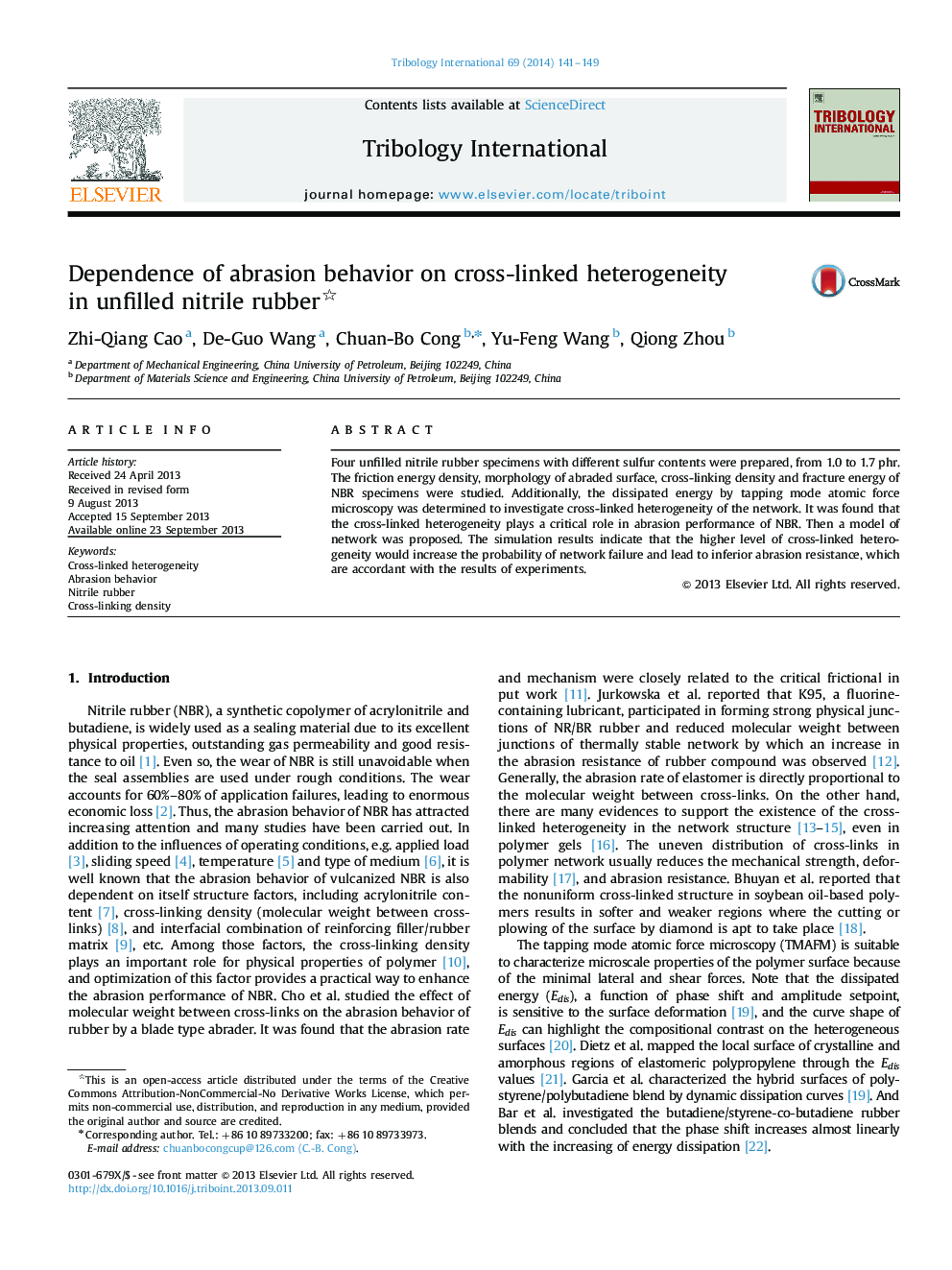| Article ID | Journal | Published Year | Pages | File Type |
|---|---|---|---|---|
| 614875 | Tribology International | 2014 | 9 Pages |
Abstract
Four unfilled nitrile rubber specimens with different sulfur contents were prepared, from 1.0 to 1.7Â phr. The friction energy density, morphology of abraded surface, cross-linking density and fracture energy of NBR specimens were studied. Additionally, the dissipated energy by tapping mode atomic force microscopy was determined to investigate cross-linked heterogeneity of the network. It was found that the cross-linked heterogeneity plays a critical role in abrasion performance of NBR. Then a model of network was proposed. The simulation results indicate that the higher level of cross-linked heterogeneity would increase the probability of network failure and lead to inferior abrasion resistance, which are accordant with the results of experiments.
Keywords
Related Topics
Physical Sciences and Engineering
Chemical Engineering
Colloid and Surface Chemistry
Authors
Zhi-Qiang Cao, De-Guo Wang, Chuan-Bo Cong, Yu-Feng Wang, Qiong Zhou,
